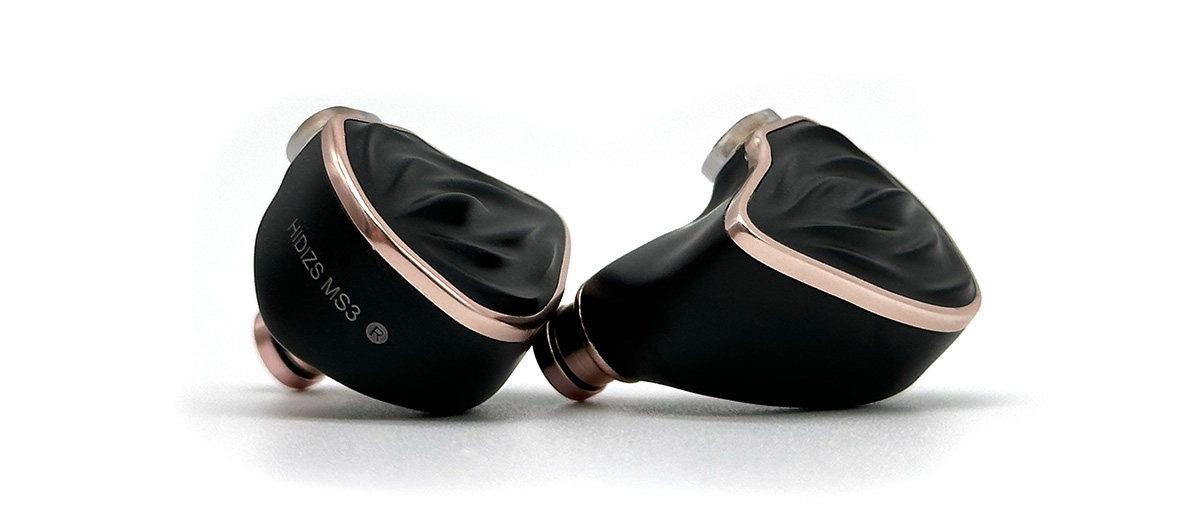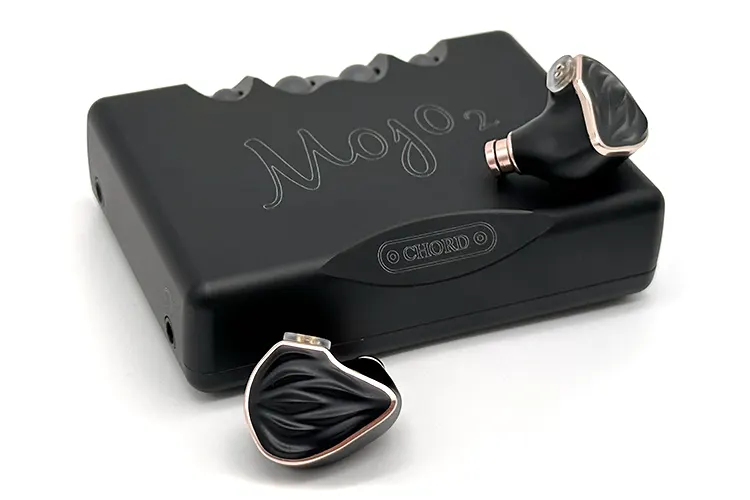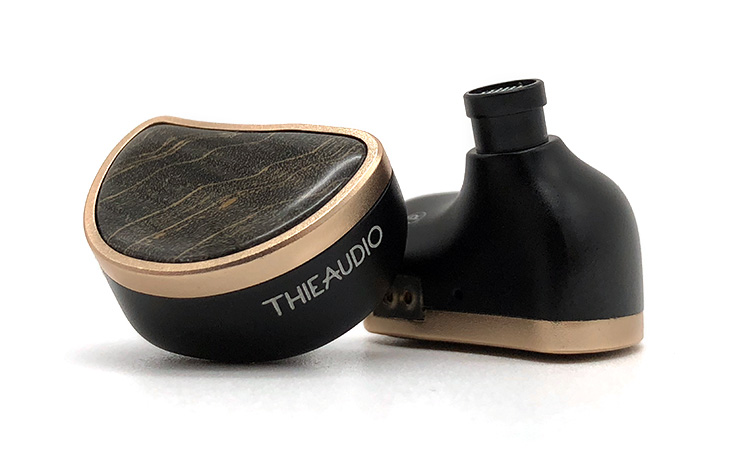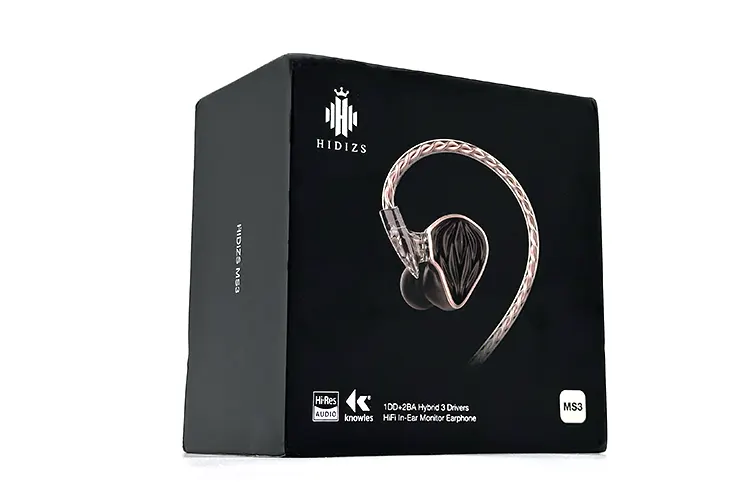Synergy
Efficiency
The hybrid driver of the MS3 is one of the more efficient setups I’ve tried recently. In partnering it with the Mojo 2, the available 600mW of power for 30Ω loads will easily satiate the needs of the MS3 since it is only 18Ω and has a sensitivity of 112 dB @1kHz. In actual usage, I maintained a volume level that is just around half of the low gain range.
While some may find the Angel as overkill for a portable source seeing that it is on paper more geared towards power users, it is still a compatible device if one is already lying around.
Beefier than the Mojo 2 definitely, the Angel only needed a couple of clicks from zero before the MS3 started singing its tunes. I mostly listened between the third to sixth click, and it is far from the maximum of what the Angel can provide.
Pairings
While there is a lot of give and take that I noticed when choosing between the Chord Electronics Mojo 2 and the Earmen Angel, both performed great pairing with the MS3.
The Angel satisfies with more acoustic information on the low-end of the MS3. While there may be less room info, bass guitars get an additional tick in energy that some might enjoy instead of the speed and linearity the Angel provides with softer drum beats.
Marking the distance of male and female vocals, a duet when played on the Angel is singing more evenly upfront. Conducting the tonality with a little more personality, the Mojo 2 pushes colder vocals on the MS3 a bit further behind.
The Mojo 2 provided the MS3 a silkier timbre for a serenading violin showing it can be sophisticated. On the other hand, a light yet lively version is how the Angel translated the same passage.
In both devices, the MS3 can recreate a hall filled with a live audience with enough room in all directions. There is a little advantage however in width and depth when playing with the Angel. I enjoy the Angel for its space and realism, while the Mojo 2 is there for vocal intimacy and bigger instruments.
Select Comparisons
TinHiFi P1 Max
Technical
If the size of drivers is a contest, the P1 Max has the MS3 beat with its huge 14.2mm planar drivers. The 10.2mm dynamic driver of the MS3, however, isn’t alone since it can reach up to 40kHz thanks to its pair of Knowles BA.
With a more limited treble range of 20kHz, the planar tech of the P1 Max is at least more proficient in the low-end extending down to 10Hz.
In a single-driver configuration, the P1 Max has a more straightforward structure. It boasts its 2-micrometer diaphragm that’s made to be as lightweight as possible which is always crucial for any planar execution whether in the portable or full-sized headphone space.
It also doesn’t have replaceable tuning filters so the default sound can only be altered through EQ or swapping tips.
Design
The “big panda” theme given to the P1 Max seems to have been lost in translation since a neutral reptile skin is what adorns its unibody shell. A stronger sense of individuality comes from the MS3 as it maintains a convincing likeness to wings.
Beginning with the drivers, the P1 Max continues its weight loss journey with the materials it has chosen for the shell. Since the P1 Max uses lightweight resin, wearing the MS3 will give off a denser heft because it opts for more metal all around which in a way also lifts its style.
Performance
The MS3 is quite literally throwing stronger punches against the P1 Max. Aside from a wider and cleaner cast of a sustained note with reverb, the oomph given by the dynamic driver of the MS3 is a much more enjoyable experience.
But since the P1 Max has a planar driver, it answers the potential of the MS3 with its crisper delineation of bass strings. It assembles a combo rendering to actual listening its lower 10Hz range advantage.
There is more girth with guitar strings on the P1 Max. Reverb on the other hand sounds more spacious and present with the MS3. Furthermore, the MS3 forms piano notes with better articulation of emotion when compared to the P1 Max which for me lacks certain aspects to be as stimulating.
The P1 Max with electric guitars is a bit less composed when compared to the more detailed and resolving qualities of the MS3. When it comes to a truer rendition, the MS3 gets closer to the energy and emphasis expected of the part.
Thieaudio Elixir
Technical
Competing against a 1DD+2BA IEM, the Elixir reinforced its lone dynamic driver with bits and tricks by using beryllium and carbon nanotubes to be part of its 3-Dimensional Velocity Transducer.
Whereas the MS3 has a more straightforward PEEK+PU composition, its arrangement together with two additional BA drivers still equals the same 20Hz to 40kHz range.
Unlike the MS3 that set the H-2019 graph as the target, the Elixir focused more on coming up with its perfect recipe for removing the harshness of the treble region and giving a lush tonality.
Loyal in serving a single master, the Elixir doesn’t come with the same removable tuning filters that come with the MS3.
Design
Only ever so slightly slimmer against the MS3 when looking closely at the more deliberate curvature in the Elixir, the IEM of Thieaudio is also comfortable to wear. The Elixir’s ear hook however is not as secure so it helps that it stays in place by itself whereas the MS3 has the additional benefit of a nice cable guide.
In making the Elixir a little bit more special, in plain sight are the unique patterns of the genuine burl wood cut to size. Using actual wood is a statement piece. Plus, the fact that its topcoat allows it a moderate glisten imparts a clue of which is more premium.
Performance
The Elixir has an easier time picking up micro details with its better proficiency in sifting through delineated basslines. It is a bit dry in comparison, but the clean and dynamic punch is slightly above the quality of what the MS3 can provide. The MS3 may not be as technically equipped here but the scale of drums and synths can fill in the room more.
Behind by a hair, the MS3 is a bit smoothed out compared to the better texture I’m getting with vibrato and airier edges of the Thieaudio IEM. The Elixir also not only sweetens the timbre of guitars, but it also works to better emphasize the farther staging and airiness of a piano solo.
Violins felt more underlined with scale and richness on the Elixir without exchanging openness. Brass instruments sounded steelier on the MS3 whereas it sounded a bit more weighted and sluggish on the Elixir.
Hidizs MS5
Technical
The 10mm dynamic driver of the MS5 may be smaller in diameter but its sandwich injection molded Kevlar fiber surrounded by liquid silicone cannot be underscored in comparison to the PEEK+PU polymer composite of the MS3.
In the case of the MS3, its strike back is coming from its dual magnetic circuit with two independent cavities.
The disposition changes a bit when talking about the additional set of balanced armature drivers inside each set even though the two are by name closely related.
As mentioned already, the MS3 is using two Knowles BA modules for its higher frequencies while the MS5 is getting its parts from Sonion dividing the four drivers across the full FR graph.
Design
It should be by now established that the MS3 is based on the MS5. But aside from the esthetic changes I’ve already given out in the earlier part of this review, there’s one crucial thing separating the two, and that is earpiece size.
The fact that there are fewer drivers inside the MS3 should have been a dead giveaway that less space is required to complete its construction. What is quite surprising here is that the MS5 even though it is bigger is the lighter IEM. This is not based on online spec only, I confirmed this with the actual units I have.
Shrinking down the MS5, a few more mechanical things have been done. The 2-Pin sockets are no longer integrated inside of the shell, instead, there is a plastic receiver placed outside. And comparing the assembly of the removable filters, the MS3 unscrews to a later part of its nozzle.
Performance
The MS5 is the chiller listen beginning with how it composes its broader low-end that fills the background more than the smaller scale of the MS3. This considerably adds some slowness in the speed of leaner blows, but since the MS5 has the better dynamics, listening to the MS3 in comparison shows it has the upper ground in pulling more information.
Compared to the MS3, the MS5 has a gentler guitar presence with a noticeably cozier timbre. It does blunt ringing to support its friendlier sound signature and yet the MS5 is still quite dispersive and easily placed.
Breathier sections on the MS5 can be heard with a smoother yet more detailed refinement. The MS3 may seem more meticulous initially but the edges are comparatively rough and less fluid.
Now, if you want a livelier top end, the MS3 will deliver more vitality against the less rushed character of the MS5. In doing so, the MS5 allows some subtler areas to be properly defined instead of being drowned out. The MS5 is also better tuned for brass instruments since it adds a bit of muscle to the otherwise rigid sound of the MS3.
Our Verdict
With their latest IEM, Hidizs once again proved that they have a knack for good tuning. In devising a triple-driver recipe for the MS3, Hidizs seems to have found the right proportion to achieving their target tuning. I wouldn’t say that their execution is flawless, however, especially around the lower region where there is a lack of clarity.
Also, while I’ve been citing the MS5 as a relative to the MS3, their different spec in-house dynamic driver is a reminder that they shouldn’t be always treated as such. Here I will finally say that the MS3 can be appreciated as an all-new IEM from Hidizs which should get its spotlight.
Hidizs MS3 Technical Specifications
- Product Name: 1DD+2BA Hybrid 3 Drivers HiFi In-Ear Monitor
- BA Driver: Knowles SWFK-31736
- Dynamic Driver: 10.2mm Dual Magnetic Circuit Dual Cavity Dynamic Driver (3rd gen PEEK+PU polymer composite diaphragm)
- Appearance: CNC integrally formed all-aluminum alloy cavity
- Replaceable Sound Filter: 3 types
- Frequency Response: 20Hz-40kHz
- Sensitivity: 112dB
- Impedance: 18W
- Cable: High purity oxygen-free copper 4-strand mixed braiding, 1.2m in length
- Earphone connector: 0.78mm 2-pin Gold-plated Socket with Replaceable Cable Design
- Weight: approximately 15g (excl. earphone cable)






